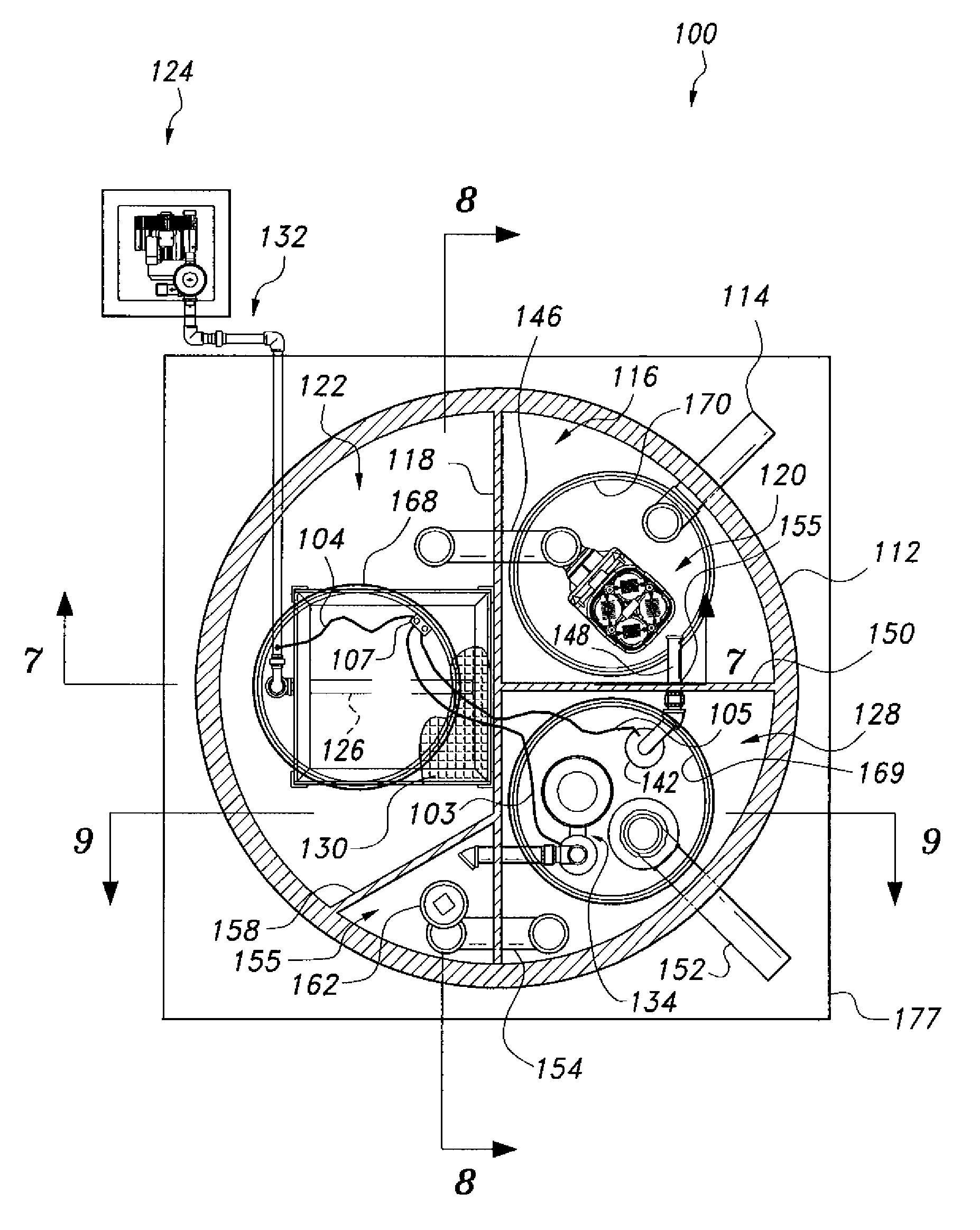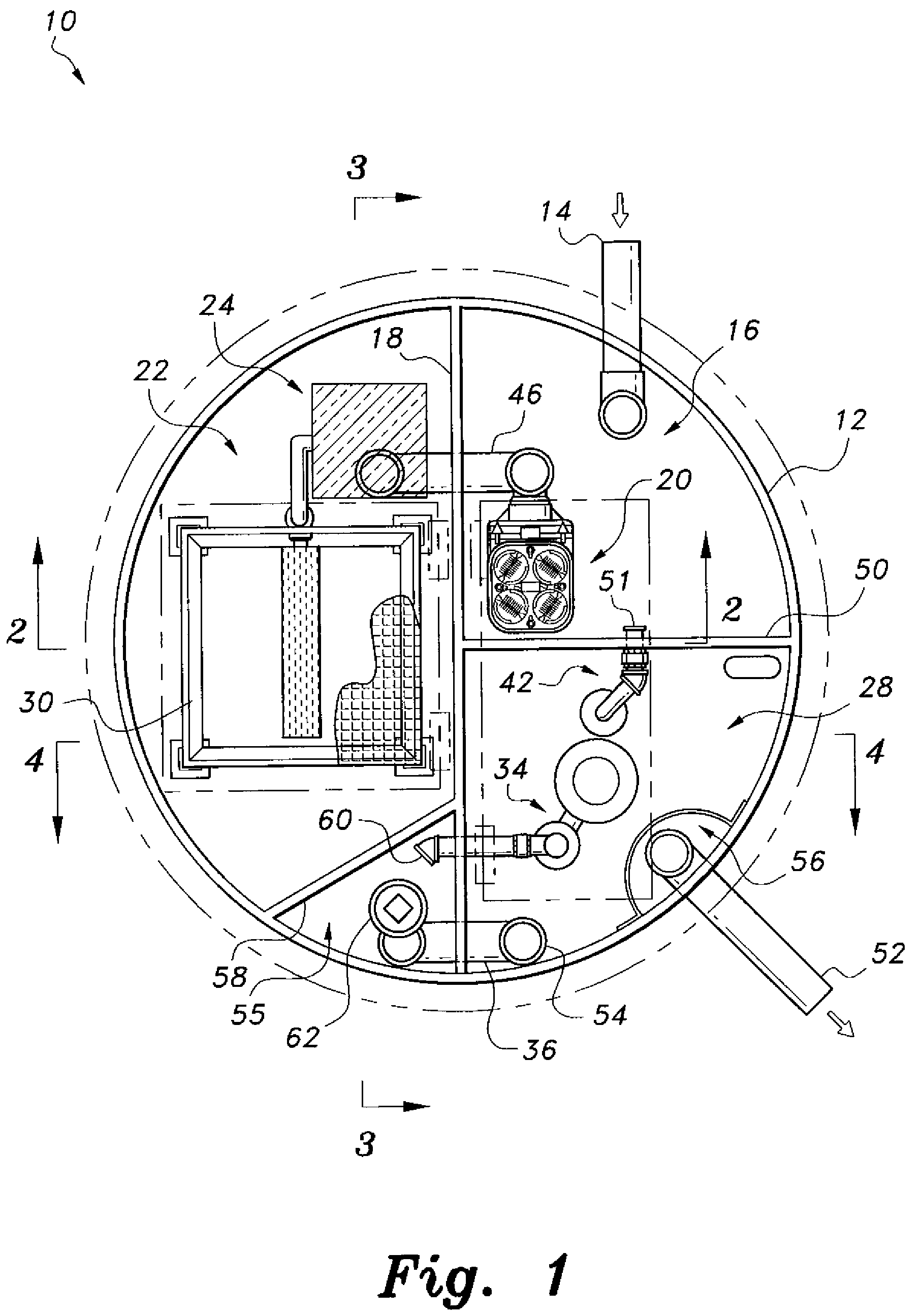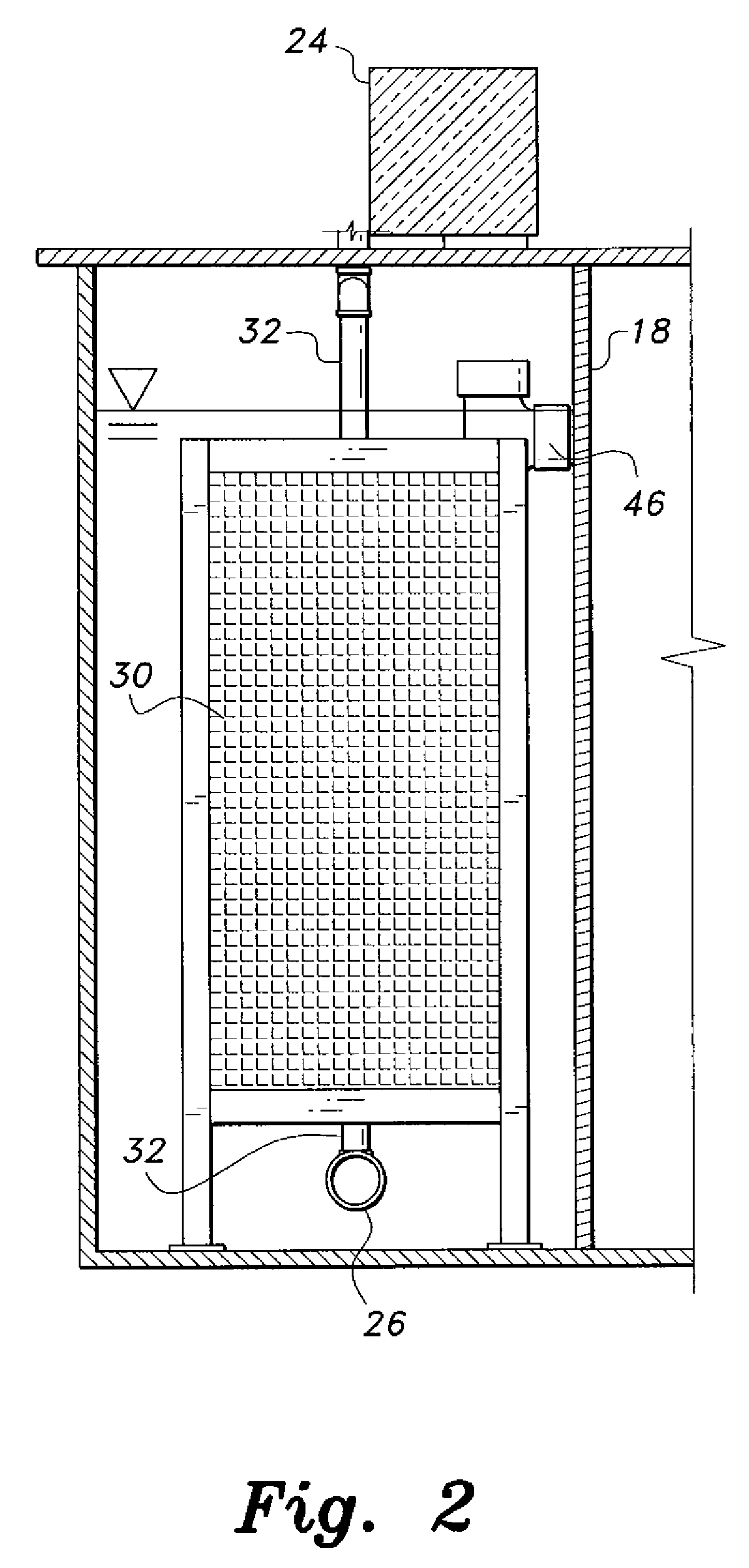Wastewater treatment system and method
a technology of wastewater treatment system and wastewater treatment method, which is applied in the direction of feed/discharge of settling tanks, rigid containers, packaging, etc., can solve the problems of unsuitable discharge of untreated wastewater, environmental pollution, and the level of dissolved oxygen in the receiving water begins to deplete, so as to prevent inadvertent floatation
- Summary
- Abstract
- Description
- Claims
- Application Information
AI Technical Summary
Benefits of technology
Problems solved by technology
Method used
Image
Examples
Embodiment Construction
[0038]Referring to FIGS. 1-4, in a first embodiment, the wastewater treatment system 10 is preferably formed as a single enclosed unit contained within a housing 12. The housing 12 is substantially cylindrical, and is preferably formed from steel-reinforced plastic or the like. As will be described in detail below, the system 10 provides three separate techniques for decontaminating wastewater contained within the single system, thus optimizing the decontamination of the wastewater.
[0039]The wastewater treatment system 10 includes the housing 12 forming an outer tank, and first and second partition walls 18, 50, respectively, dividing the tank into first, second and third chambers 16, 22, 28, respectively. The first partition wall 18 generally bisects the cylindrical housing 12 diametrically, and the second partition wall 50 is orthogonal to the first partition wall 18, extending radially and generally bisecting one of the two semicylindrical spaces formed by the first partition wal...
PUM
| Property | Measurement | Unit |
|---|---|---|
| height | aaaaa | aaaaa |
| height | aaaaa | aaaaa |
| height | aaaaa | aaaaa |
Abstract
Description
Claims
Application Information
 Login to View More
Login to View More - R&D
- Intellectual Property
- Life Sciences
- Materials
- Tech Scout
- Unparalleled Data Quality
- Higher Quality Content
- 60% Fewer Hallucinations
Browse by: Latest US Patents, China's latest patents, Technical Efficacy Thesaurus, Application Domain, Technology Topic, Popular Technical Reports.
© 2025 PatSnap. All rights reserved.Legal|Privacy policy|Modern Slavery Act Transparency Statement|Sitemap|About US| Contact US: help@patsnap.com



